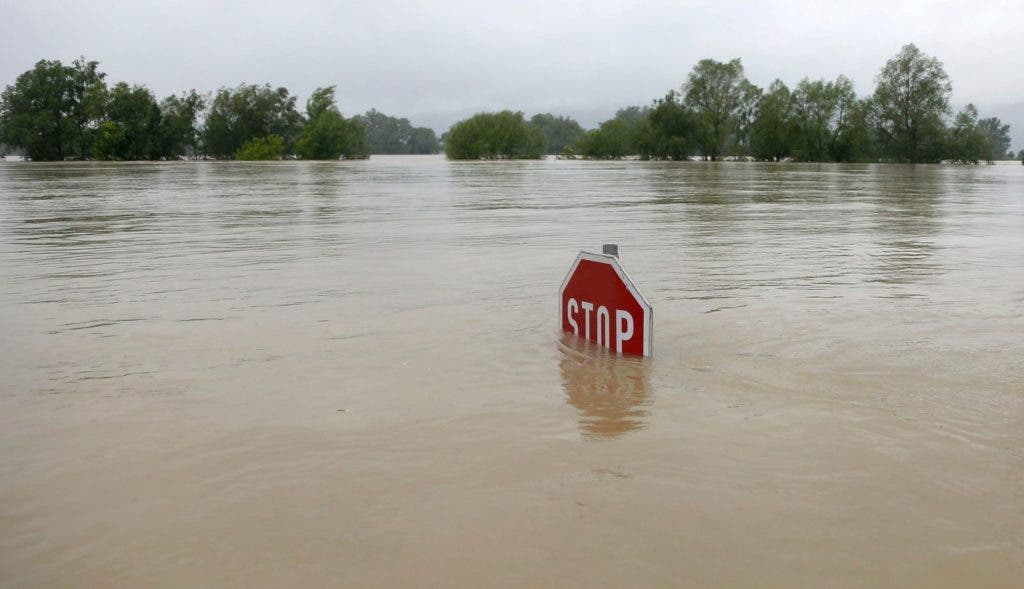As it braces for the coronavirus outbreak, the US will soon have to add another concern to its list: flooding, likely exacerbated by climate heating.

Up to 23 states are set to experience moderate to severe flooding in the spring, according to the National Oceanic and Atmospheric Administration (NOAA), with the central and southeastern regions of the country under the higher risk.
“Nearly every day, dangerous flooding occurs somewhere in the United States and widespread flooding is in the forecast for many states in the months ahead,” Ed Clark, director of NOAA’s National Water Center, said on a statement.
NOAA expects an ongoing rainfall, a highly-saturated soil and above-normal precipitations in the coming months, especially in the Mississippi River basin, the Missouri River basin and the Red River of the North.
Any substantial local rainfall could cause flooding in these areas, already experiencing a high level of soil moisture, according to NOAA’s projections, based on the assessment of a number of factors such as drought, soil moisture, and snowpack.
Aware of the upcoming challenge, a group of regional mayors has been working together to get ready for the flooding, also coordinating the federal agencies and Congress. But the coronavirus outbreak is making those plans more difficult, having to deal with several crisis situations at the same time.
“The current situation with COVID-19 presents us a fight on two fronts: one front, we have the ongoing coronavirus pandemic, and on the other, what promises to be a very active spring 2020 flood season,” Sharon Broome, mayor of Baton Rouge, Louisiana, told Buzzfeed News.

Having to work on the two fronts simultaneously will be a gargantuan challenge for many states. But it will also be an opportunity to understand better the type of overlapping impacts that will get more common as the world gets warmer.
Human-induced global warming has increased the number, the frequency and the intensity of extreme weather events across the globe. In the US, it’s now more commons to see more intense rains and longer periods of warmer weather, according to the National Climate Assessment.
To anticipate the floods, states have been accumulating reserves of personal protective equipment for the first responders to floods, including masks, gloves and head coverings. Some districts have also started to distribute premade sandbags to vulnerable communities to avoid a last-minute crisis.
At the same time, the Red Cross will be working soon with local officials on plans to shelter people that will be eventually displaced by the flooding, hoping to relocate them to hotels and dorms. But doing so in the middle of a coronavirus outbreak will be tricky, as officials will have to ensure a proper distance between people.
Setting up a shelter will require to screen people for symptoms of COVID-19 before allowing them access, getting their temperatures checked, for example. Those that exhibit symptoms would have to be isolated from the rest, Trevor Riggen, senior vice president of disaster cycle services at the American Red Cross, told BuzzFeed.
The COVID-19 pandemic is shaping up to be one of the most pressing challenges the country has faced in peacetime. Any additional pressure could prove absolutely devastating unless serious prevention and preparation measures are taken.
Careful preparation is more important than ever, as is staying calm and focused, authorities warn.
“I feel like more than anything, we’re just trying to keep our people in some state of calm as we daily put out these bleak circumstances, these bleak numbers,” said Belinda Constant, mayor of Gretna, Louisiana. “We’re just praying every day that we don’t end up in a state of anarchy.”






